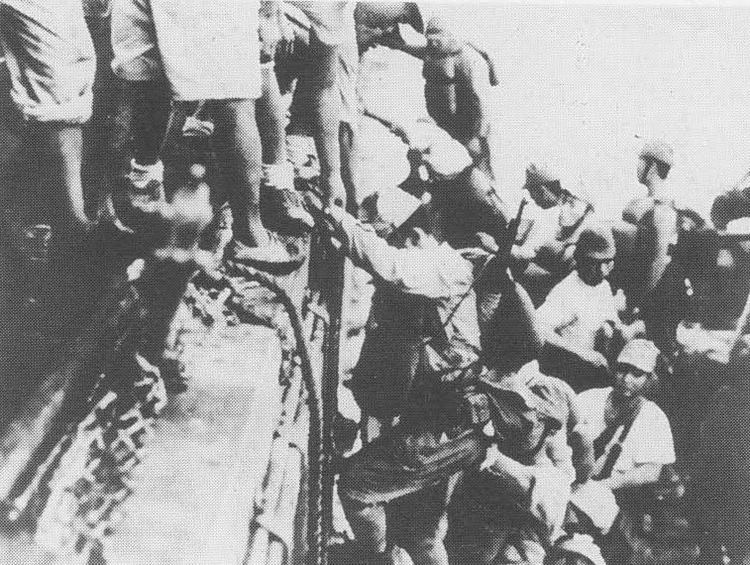Country Empire of Japan | Branch Imperial Japanese Navy | |
 | ||
Active August 1942 – November 1943 Allegiance Axis Powers of World War II Type Ad hoc military logistics organization Role Supply and reinforcement to Japanese Army and Navy units located in the Solomon Islands and New Guinea | ||
The Tokyo Express was the name given by Allied forces to the use of Imperial Japanese Navy ships at night to deliver personnel, supplies, and equipment to Japanese forces operating in and around New Guinea and the Solomon Islands during the Pacific campaign of World War II. The operation involved loading personnel or supplies aboard fast warships (mainly destroyers), later submarines, and using the warships' speed to deliver the personnel or supplies to the desired location and return to the originating base all within one night so Allied aircraft could not intercept them by day.
Contents
Name
The original name of the resupply missions was "The Cactus Express", coined by Allied forces on Guadalcanal, using the codename for the island. After the U.S. press began referring to it as the "Tokyo Express," apparently in order to preserve operational security for the codeword "Cactus," Allied forces also began to use the phrase. The Japanese called the night resupply missions Rat Transportation (鼠輸送, nezumi yusō), because they took place at night.
Organization and history
Night transportation was necessary for Japanese forces due to Allied air superiority in the South Pacific, established soon after the Allied landings on Guadalcanal and Henderson Field began serving as a base for the "Cactus Air Force" in August 1942. Delivery of troops and material by slow transport ships to Japanese forces on Guadalcanal and New Guinea soon proved too vulnerable to daytime air attack. Thus, Japanese Combined Fleet commander, Admiral Isoroku Yamamoto, authorized the use of faster warships at night to make the deliveries when the threat of detection was much less and aerial attack minimal.
The Tokyo Express began soon after the Battle of Savo Island in August 1942 and continued until late in the Solomon Islands campaign when one of the last, large Express runs was interdicted and almost completely destroyed in the Battle of Cape St. George on November 26, 1943. Because the fast destroyers typically used were not configured for cargo handling, many supplies were simply pushed into the water, inside sealed steel drums lashed together; the drums floated ashore or were picked up by barge. A typical night in December resulted in 1500 drums being rolled into the sea, with only 300 recovered.
Most of the warships used for Tokyo Express missions came from the Eighth Fleet, based at Rabaul and Bougainville, although ships from Combined Fleet units based at Truk were often temporarily attached for use in Express missions. The warship formations assigned to Express missions were often formally designated as the Reinforcement Unit, but the size and composition of this unit varied from mission to mission.
John F. Kennedy and PT-109
John F. Kennedy's PT-109 was lost on a "poorly planned and uncoordinated" attack on the Tokyo Express. 15 PT boats with 60 torpedoes did not register a single hit, let alone sink any enemy ships. The PT-109 was struck by the destroyer Amagiri returning from her supply run, estimated to be traveling in excess of 30 knots with no running lights.
The end
To signify final victory over the Japanese on Guadalcanal, General Alexander Patch, commander of the land forces on the island, messaged his superior, Admiral William F. Halsey, "Tokyo Express no longer has terminus on Guadalcanal."
